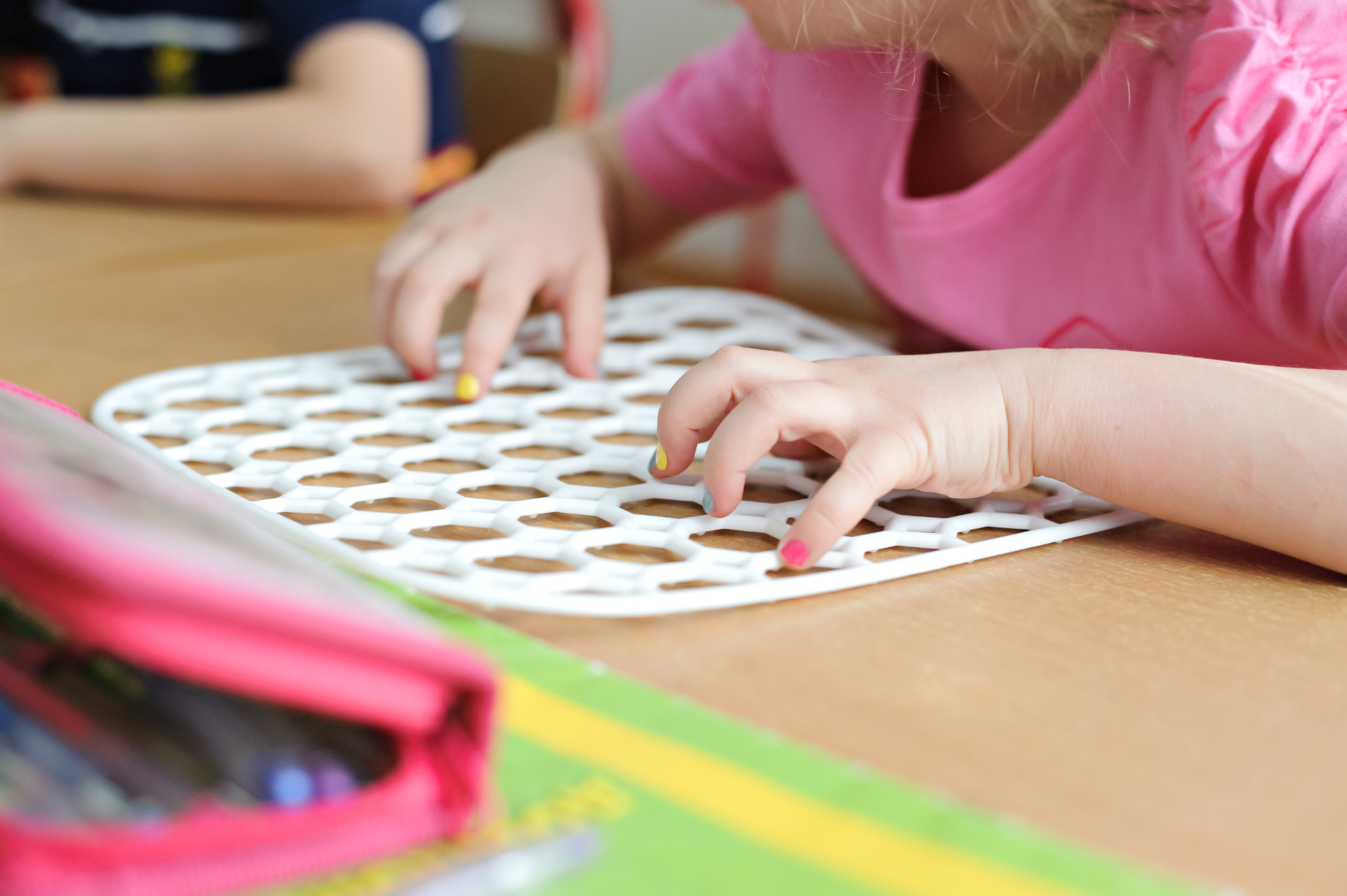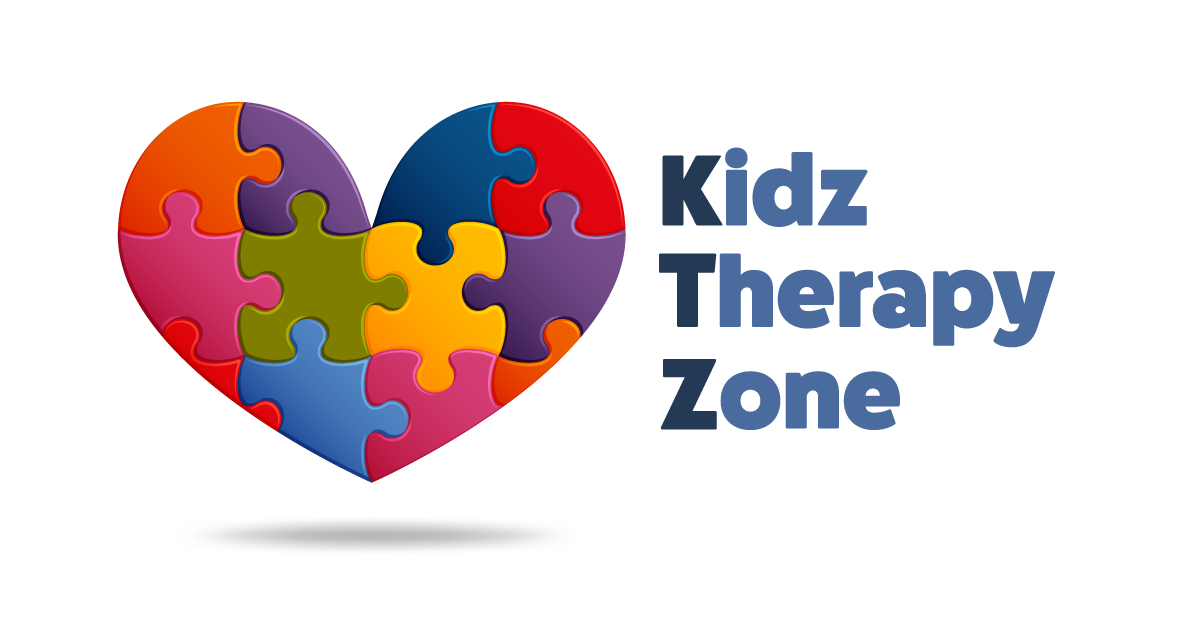
At KTZ, our skilled occupational therapist’s focus on the whole child. Establishing rapport, and building trust is the foundation of our interventions. Our therapists are trained in Sensory Processing Disorders, Autism Spectrum Disorders, ADHD strategies, feeding difficulties, and Developmental Delays. Collaborating closely with families, educators, and fellow professionals, we develop and execute personalized plans to empower your child’s success across various environments—be it at home, school, play, or community settings. Our clinic offers specialized Occupational Therapy services, with expertise in:
- Sensory Integration
- Primitive Reflexes
- Therapeutic Listening Program
- Learning Without Tears
- Developmental Delay
- Feeding
- Interactive Metronome
What is Occupational Therapy as it relates to Pediatrics?
Our lives are made up of occupations—meaningful everyday activities. These occupations can include many roles, such as being a child that eats, plays, and learns; a student; a friend; an athlete, etc. We generally don’t think about our daily occupations until we have trouble doing them. Everyone has occupations— from the toddler whose occupations are play and learning to develop important skills, to the school aged child learning to write, dress themselves, construct more complicated play themes, eat a variety of foods, to the older teen whose occupations are studying for exams, learning work related skills, engaging in peer and family relationships, and managing their time.
If you are recovering from an accident or injury, your valued occupations may be disrupted. If a child is slow to develop, the way they complete their daily occupations will be impacted.
An Occupational therapist looks at all the areas needed to have a meaningful and purposeful life, then incorporates the underlying skills needed to complete those valued occupations into therapeutic interventions and home programs.
When would a child benefit from OT services?
- Gross motor skills (difficulty with rolling, crawling, walking, jumping, ball skills, bike riding, strength, coordination, balance)
- Fine motor skills (difficulty holding a crayon or pencil correctly, cutting with scissors, difficulty opening containers, difficulty manipulating clothing fasteners, difficulty with handwriting, using utensils for feeding, tying shoes
- Self-care skills (bathing, tooth brushing, dressing, toileting, feeding)
- Sensory needs (touch, sound, smell, taste, sight, vestibular (movement), proprioception (body awareness)
- Social Skills (getting along with others, dealing with conflict, making new friends, keeping friends)
- Executive Functioning skills (Organization, Planning, Working Memory, Flexibility, Task Initiation, Attention)
- Primitive reflex integration (Exercises for retained primitive reflexes which are impacting a child’s development in areas such as sensory, motor, balance, posture, coordination).
What are primitive reflexes and how can they affect my child?
Primitive reflexes are automatic/involuntary movements fundamental for the development of muscle tone, sensory integration, head control and overall development. As a baby grows, these primitive reflexes will slowly disappear as the infant’s brain develops and matures and the infant’s movements become more voluntary and controlled.
When reflexes are retained, it can lead to impulsivity, hyperactivity, aggression, developmental delays, anxiety, fear, bedwetting, poor academic performance, and poor intellectual development.
Who can provide OT services?
Licensed Occupational Therapists can provide OT evaluation and treatment. Licensed Occupational Therapy Assistants can provide treatment.
What is involved in an Occupational Therapy evaluation?
An occupational therapy evaluation typically begins with the occupational therapist gathering information from the parent or caregiver regarding medical history, patterns of daily living, client wants and needs, whether developmental milestones have been met, supports, barriers, and interests of the child. Once this information is gathered, the occupational therapist will perform a clinical observation to gather information about their participation in various activities. The occupational therapist will conduct appropriate assessments to further determine limitations or potential problems that are hindering the child’s occupational performance. The assessments can measure a child’s skills in areas such as fine and gross motor skills, sensory processing, visual-motor integration, self-care abilities, and social interactions. Once the evaluation has been conducted, the occupational therapist will establish therapy goals and develop a treatment plan to meet the child’s specific needs. The evaluation will consider the child’s strengths and challenges to create individualized goals.
How can OT help an Autistic child?
Occupational therapy can improve everyday skills which allow the child to become more independent and participate in a wide range of activities. For people with autism, OT programs often focus on play skills, learning strategies, sensory needs, improving emotional processing, limiting impulsive behaviors and gaining independence with self-cares.
How can OT help with ADHD?
Occupational therapy can address the sensory needs and executive functioning skills of children with ADHD. When the child’s sensory needs are identified and met, their ability to sustain attention improves. Strategies to boost working memory, impulse control, planning & organizational skills can then be taught and implemented.
How can OT help a picky eater or a child who has difficulty gaining weight?
Occupational therapy can help your picky eater by identifying and treating any underlying causes such as sensory defensiveness, delayed oral motor skills, structural differences, mealtime structure/routine, and delays in grasp and coordination. It’s not uncommon for there to be more than one reason your child is declining certain foods or having difficulty gaining weight.
How can OT help with anxiety?
Occupational therapy utilizes both sensory and cognitive approaches for managing anxiety and can reduce the need for medications. By teaching and practicing relaxation techniques that regulate the nervous system and shifting one’s thoughts to a more positive mindset, the symptoms of anxiety can be significantly reduced.
How can OT help with sensory challenges?
When a person’s sensory differences are great enough that they affect everyday life and your ability to participate in meaningful activities; an Occupational Therapy provider can identify those needs. Sensory challenges can impact several areas, including, but not limited to, motor coordination, their willingness to explore foods, participation in self-care activities, and attentional skills. They will provide a personalized sensory diet to help their nervous system better process all the information it is receiving to decrease overstimulation and help improve emotional processing and limit impulsive behaviors. Sensory diets are often made up of specific movement patterns, tactile experiences, auditory experiences, and “heavy work” as suggested by your therapist.
How can OT help with attention?
Occupational therapy addresses attentional issues in several ways depending on the underlying reason for attentional deficits. Oftentimes, occupational therapists utilize several techniques including sensory strategies, environmental modification, cognitive strategies, and task modifications. In some cases, children may struggle with attention due to delays in postural control or visual-motor skills. Children who struggle in these areas may experience fatigue much faster when completing school-based tasks. An occupational therapist can address this through individualized therapy techniques that address the child’s specific needs and challenges.
How can OT help with academics?
For some of us, school can be daunting, difficult and overwhelming. However, there are ways occupational therapy can assist children who find it a little more challenging to actually love attending school. OT can help with attention, handwriting (we use Handwriting without Tears curriculum), self-regulation (our ability to monitor, adjust and maintain our emotions, thoughts and behavior in response to the things happening around us. Essentially, it is our ability to stop, think and then act), and even advise potential classroom modifications to help your student succeed.
How can OT help with reactions to loud noises?
For some children loud noises can be very overwhelming and cause physical reactions such as covering their ears, running away, or yelling. We provide a customized protocol with use of the Therapeutic Listening Program to help children process these loud noises without being overstimulated. This program has also shown benefits in these areas as well: Increased focus and attention, better moods, improved handwriting, greater tolerance to noise, fewer tantrums, less anxiety, improved communication skills.
How is OT different from PT?
The most basic difference between physical therapy and occupational therapy is that a PT focuses on improving the patient’s ability to move their body whereas an OT focuses on improving the patient’s ability to perform activities of daily living.
